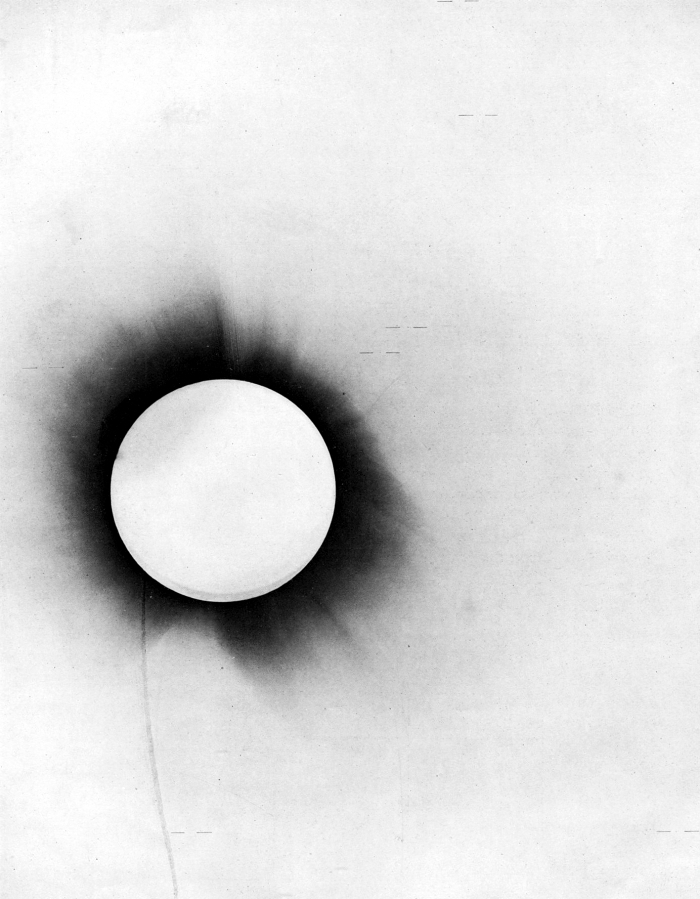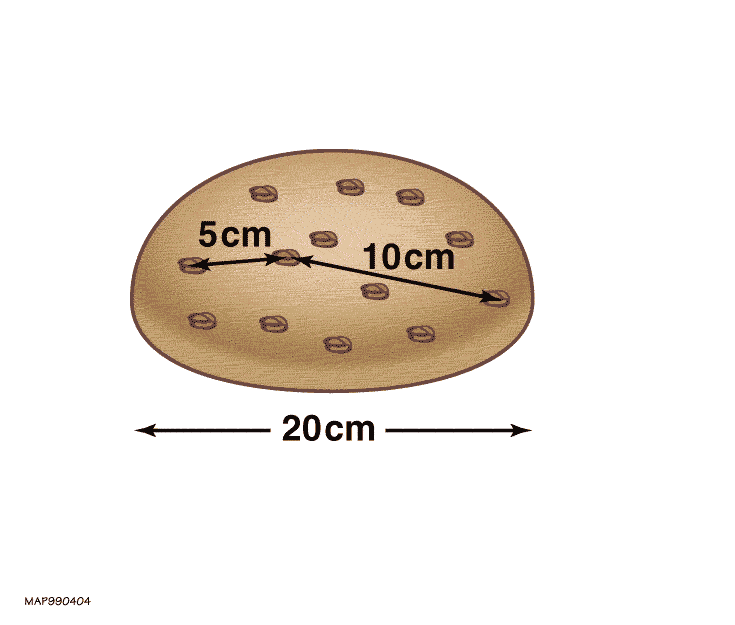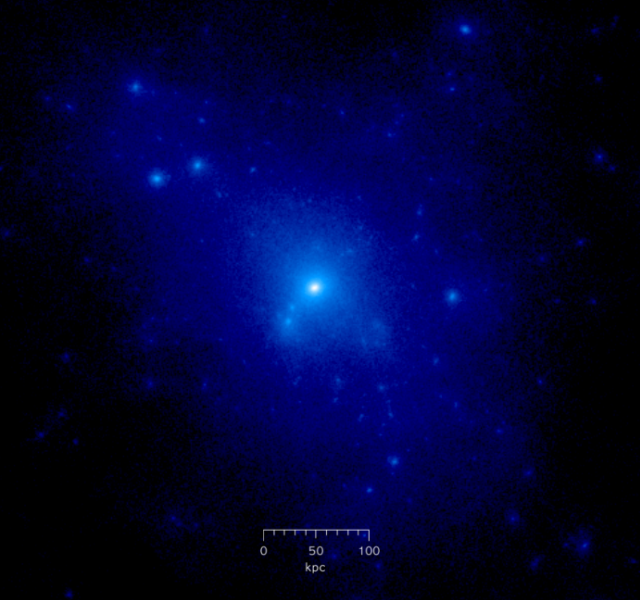|
Strong Gravitational Lensing
Strong gravitational lensing is a gravitational lensing effect that is strong enough to produce multiple images, arcs, or Einstein rings. Generally, for strong lensing to occur, the projected lens mass density must be greater than the '' critical density'', that is \Sigma_. For point-like background sources, there will be multiple images; for extended background emissions, there can be arcs or rings. Topologically, multiple image production is governed by the odd number theorem. Strong lensing was predicted by Albert Einstein's general theory of relativity and observationally discovered by Dennis Walsh, Bob Carswell, and Ray Weymann in 1979. They determined that the Twin Quasar Q0957+561A comprises two images of the same object. Observations Most strong gravitational lenses are detected by large-scale galaxy surveys. Galaxy lensing The foreground lens is a galaxy. When the background source is a quasar or unresolved jet, the strong lensed images are usually point-like ... [...More Info...] [...Related Items...] OR: [Wikipedia] [Google] [Baidu] |
Gravitational Lensing
A gravitational lens is matter, such as a galaxy cluster, cluster of galaxies or a point particle, that bends light from a distant source as it travels toward an observer. The amount of gravitational lensing is described by Albert Einstein's General relativity, general theory of relativity. If light is treated as Corpuscular theory of light, corpuscles travelling at the speed of light, Newtonian physics also predicts the bending of light, but only half of that predicted by general relativity. Orest Khvolson (1924) and Frantisek Link (1936) are generally credited with being the first to discuss the effect in print, but it is more commonly associated with Einstein, who made unpublished calculations on it in 1912 and published an article on the subject in 1936. In 1937, Fritz Zwicky posited that galaxy clusters could act as gravitational lenses, a claim confirmed in 1979 by observation of the Twin QSO SBS 0957+561. Description Unlike an lens (optics), optical lens, a point-li ... [...More Info...] [...Related Items...] OR: [Wikipedia] [Google] [Baidu] |
Quasar
A quasar ( ) is an extremely Luminosity, luminous active galactic nucleus (AGN). It is sometimes known as a quasi-stellar object, abbreviated QSO. The emission from an AGN is powered by accretion onto a supermassive black hole with a mass ranging from millions to tens of billions of solar masses, surrounded by a gaseous Accretion disk, accretion disc. Gas in the disc falling towards the black hole heats up and releases energy in the form of electromagnetic radiation. The radiant energy of quasars is enormous; the most powerful quasars have luminosity, luminosities thousands of times greater than that of a galaxy such as the Milky Way. Quasars are usually categorized as a subclass of the more general category of AGN. The redshifts of quasars are of Expansion of the universe, cosmological origin. The term originated as a Contraction (grammar), contraction of "quasi-stellar ''[star-like]'' radio source"—because they were first identified during the 1950s as sources of radio-wave ... [...More Info...] [...Related Items...] OR: [Wikipedia] [Google] [Baidu] |
Hubble Constant
Hubble's law, also known as the Hubble–Lemaître law, is the observation in physical cosmology that galaxies are moving away from Earth at speeds proportional to their distance. In other words, the farther a galaxy is from the Earth, the faster it moves away. A galaxy's recessional velocity is typically determined by measuring its redshift, a shift in the frequency of light emitted by the galaxy. The discovery of Hubble's law is attributed to work published by Edwin Hubble in 1929, but the notion of the universe expanding at a calculable rate was first derived from general relativity equations in 1922 by Alexander Friedmann. The Friedmann equations showed the universe might be expanding, and presented the expansion speed if that were the case. Before Hubble, astronomer Carl Wilhelm Wirtz had, in 1922 and 1924, deduced with his own data that galaxies that appeared smaller and dimmer had larger redshifts and thus that more distant galaxies recede faster from the observer. In ... [...More Info...] [...Related Items...] OR: [Wikipedia] [Google] [Baidu] |
Cosmological Model
Physical cosmology is a branch of cosmology concerned with the study of cosmological models. A cosmological model, or simply cosmology, provides a description of the largest-scale structures and dynamics of the universe and allows study of fundamental questions about its origin, structure, evolution, and ultimate fate.For an overview, see Cosmology as a science originated with the Copernican principle, which implies that celestial bodies obey identical physical laws to those on Earth, and Newtonian mechanics, which first allowed those physical laws to be understood. Physical cosmology, as it is now understood, began in 1915 with the development of Albert Einstein's general theory of relativity, followed by major observational discoveries in the 1920s: first, Edwin Hubble discovered that the universe contains a huge number of external galaxies beyond the Milky Way; then, work by Vesto Slipher and others showed that the universe is expanding. These advances made it possi ... [...More Info...] [...Related Items...] OR: [Wikipedia] [Google] [Baidu] |
Dark Matter Halo
In modern models of physical cosmology, a dark matter halo is a basic unit of cosmological structure. It is a hypothetical region that has decoupled from cosmic expansion and contains gravitationally bound matter. A single dark matter halo may contain multiple virialized clumps of dark matter bound together by gravity, known as subhalos. Modern cosmological models, such as ΛCDM, propose that dark matter halos and subhalos may contain galaxies. The dark matter halo of a galaxy envelops the galactic disc and extends well beyond the edge of the visible galaxy. Thought to consist of dark matter, halos have not been observed directly. Their existence is inferred through observations of their effects on the motions of stars and gas in galaxies and gravitational lensing. Dark matter halos play a key role in current models of galaxy formation and evolution. Theories that attempt to explain the nature of dark matter halos with varying degrees of success include cold dark matter (C ... [...More Info...] [...Related Items...] OR: [Wikipedia] [Google] [Baidu] |
Mass
Mass is an Intrinsic and extrinsic properties, intrinsic property of a physical body, body. It was traditionally believed to be related to the physical quantity, quantity of matter in a body, until the discovery of the atom and particle physics. It was found that different atoms and different elementary particle, elementary particles, theoretically with the same amount of matter, have nonetheless different masses. Mass in modern physics has multiple Mass in special relativity, definitions which are conceptually distinct, but physically equivalent. Mass can be experimentally defined as a measure (mathematics), measure of the body's inertia, meaning the resistance to acceleration (change of velocity) when a net force is applied. The object's mass also determines the Force, strength of its gravitational attraction to other bodies. The SI base unit of mass is the kilogram (kg). In physics, mass is Mass versus weight, not the same as weight, even though mass is often determined by ... [...More Info...] [...Related Items...] OR: [Wikipedia] [Google] [Baidu] |
Gravitational Potential
In classical mechanics, the gravitational potential is a scalar potential associating with each point in space the work (energy transferred) per unit mass that would be needed to move an object to that point from a fixed reference point in the conservative gravitational field. It is analogous to the electric potential with mass playing the role of charge. The reference point, where the potential is zero, is by convention infinitely far away from any mass, resulting in a negative potential at any finite distance. Their similarity is correlated with both associated fields having conservative forces. Mathematically, the gravitational potential is also known as the Newtonian potential and is fundamental in the study of potential theory. It may also be used for solving the electrostatic and magnetostatic fields generated by uniformly charged or polarized ellipsoidal bodies. Potential energy The gravitational potential (''V'') at a location is the gravitational potential ener ... [...More Info...] [...Related Items...] OR: [Wikipedia] [Google] [Baidu] |
Weak Lensing
While the presence of any mass bends the path of light passing near it, this effect rarely produces the giant arcs and multiple images associated with strong gravitational lensing. Most lines of sight in the universe are thoroughly in the weak lensing regime, in which the deflection is impossible to detect in a single background source. However, even in these cases, the presence of the foreground mass can be detected, by way of a systematic alignment of background sources around the lensing mass. Weak gravitational lensing is thus an intrinsically statistical measurement, but it provides a way to measure the masses of astronomical objects without requiring assumptions about their composition or dynamical state. Methodology Gravitational lensing acts as a coordinate transformation that distorts the images of background objects (usually galaxies) near a foreground mass. The transformation can be split into two terms, the convergence and shear. The convergence term magnifie ... [...More Info...] [...Related Items...] OR: [Wikipedia] [Google] [Baidu] |
Galaxy Cluster
A galaxy cluster, or a cluster of galaxies, is a structure that consists of anywhere from hundreds to thousands of galaxies that are bound together by gravity, with typical masses ranging from 1014 to 1015 solar masses. Clusters consist of galaxies, heated gas, and dark matter. They are the second-largest known gravitationally bound structures in the universe after superclusters. They were believed to be the largest known structures in the universe until the 1980s, when superclusters were discovered. Small aggregates of galaxies are referred to as galaxy groups rather than clusters of galaxies. Together, galaxy groups and clusters form superclusters. Basic properties Galaxy clusters typically have the following properties: * They contain 100 to 1,000 galaxies, hot X-ray emitting gas and large amounts of dark matter. Details are described in the "Composition" section. * They have total masses of 1014 to 1015 solar masses. * They typically have diameters from 1 to 5 Mpc ( ... [...More Info...] [...Related Items...] OR: [Wikipedia] [Google] [Baidu] |
Euclid (spacecraft)
''Euclid'' is a wide-angle space telescope with a 600-megapixel camera to record visible light, a near-infrared spectrometer, and photometer, to determine the redshift of detected galaxies. It was developed by the European Space Agency (ESA) and the Euclid Consortium and was launched on 1 July 2023 from Cape Canaveral in Florida. The mission is named after the ancient Greek mathematician Euclid. After approximately one month, it reached its destination, a halo orbit around the Sun-Earth second Lagrange point L2, at an average distance of 1.5million kilometres beyond Earth's orbit. There the telescope is to remain operational for at least six years. The objective of the ''Euclid'' mission is to better understand dark energy and dark matter by accurately measuring the accelerating expansion of the universe. The Korsch-type telescope will measure the shapes of galaxies at varying distances from Earth and investigate the relationship between distance and redshift. ''Euclid'' i ... [...More Info...] [...Related Items...] OR: [Wikipedia] [Google] [Baidu] |
Vera C
Vera may refer to: Names *Vera (surname), a surname (including a list of people with the name) *Vera (given name), a given name (including a list of people and fictional characters with the name) **Vera (), archbishop of the archdiocese of Tarragona Places Spain *Vera, Almería, a municipality in the province of Almería, Andalusia * Vera de Bidasoa, a municipality in the autonomous community of Navarra *La Vera, a comarca in the province of Cáceres, Extremadura United States * Vera, Illinois, an unincorporated community * Vera, Kansas, a ghost town * Vera, Missouri, an unincorporated community * Vera, Oklahoma, a town * Vera, Texas, an unincorporated community * Vera, Virginia, an unincorporated community * Veradale, Washington, originally known as Vera, CDP Elsewhere * Vera, Santa Fe, a city in the province of Santa Fe, Argentina * Vera Department, an administrative subdivision (departamento) of the province of Santa Fe * Vera, Mato Grosso, Brazil, a municipality * Cape Ve ... [...More Info...] [...Related Items...] OR: [Wikipedia] [Google] [Baidu] |
Astrophysical Jet
An astrophysical jet is an astronomical phenomenon where outflows of ionised matter are emitted as extended beams along the axis of rotation. When this greatly accelerated matter in the beam approaches the speed of light, astrophysical jets become relativistic jets as they show effects from special relativity. The formation and powering of astrophysical jets are highly complex phenomena that are associated with many types of high-energy astronomical sources. They likely arise from dynamic interactions within accretion disks, whose active processes are commonly connected with compact central objects such as black holes, neutron stars or pulsars. One explanation is that tangled magnetic fields are organised to aim two diametrically opposing beams away from the central source by angles only several degrees wide Jets may also be influenced by a general relativity effect known as frame-dragging. Most of the largest and most active jets are created by supermassive black holes (SM ... [...More Info...] [...Related Items...] OR: [Wikipedia] [Google] [Baidu] |








